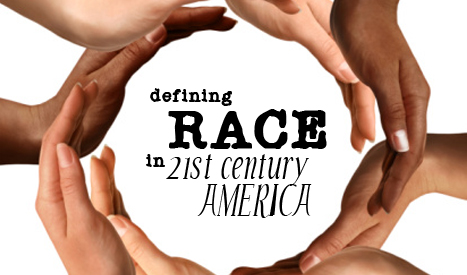
By Kimetha Hill
Staff Writer
The definition of race in America today sparks many different debates. And the way that people identify themselves can lead to a more accurate classification of race in America. From the foundation of the nation in the eighteenth century and the creation of the Constitution, race has played a role in shaping the country, as well as developing it.
Last Wednesday, the Center for American Progress held an in-depth discussion titled, The Meaning of Race in a 21st Century America. The discussion was held at the office of the Center for American Progress in Washington, D.C. and featured Rinku Sen, President and Executive Director of Race Forward: The Center for Racial Justice Innovation; Julie Dowling, Associate Professor, Department of Latina/Latino Studies, University of Illinois, Urbana-Champaign; Roderick Harrison, Senior Research Fellow, Civic Engagement and Governance Institute, Joint Center for Political and Economic Studies and Hilary Shelton, Director to the NAACP’s Washington Bureau, Senior Vice President for Advocacy and Policy. The discussion was moderated by Vanessa Cárdenas, Vice President, Progress 2050, Center for American Progress.
To have an accurate conversation of race in this country means to examine the origins of race. Ms. Cárdenas asked the panelists to define race today and what role the census plays in this definition.
“Right now there is a separation between Hispanic origin and other races. This separation follows with the race question,” said Professor Dowling. She explained that the origin comes from Latinos classifying themselves through Hispanic issues. Before 1930, the Mexican classification was on the census, but after 1930, Hispanics lobbied to have it removed. Minorities wanted a way to measure population without race. “Beginning in 1970 you saw “Hispanic origin” appear on the census, because there are a variety of races within the Latino ethnicity. Now we’re moving forward to better options,” she added.
It is important to note that up until 1960, numerators filled out the census for people, contributing to the lack of accuracy. Numerators filled in what race they perceived an individual to be, which led to a lot of inaccuracy. Now with self-identification, accuracy in measurements of demographics has greatly increased.
Mr. Harrison gave a pointed history lesson on division of power within the nation – going back to race and its definition in the U.S. Constitution. “The measurement of population begins with the constitution requirement. Race immediately enters as to who will be a citizen.” He discusses that having blacks counted as three fifths of a person was a compromise between the North and the South because if the South counted blacks as a full person, the shift of political power would have gone to the South, and if blacks were not counted at all, political power would have shifted to the North.
“The term “minority” has nothing to do with numbers, but everything to do with status,” Mr. Harrison continued. “Minorities are people that have the status of a minor before the law.” This classification began with blacks and women and continued with other groups as they migrated to the U.S. Mr. Harrison said that these groups are added to the census as they become large enough to have social, political and policy implications.
In 1970, the statistical reporting changed. Before then, the census’ main race distinction was whether a person identified as black or not. But with the growing Latino population and the variety of races within this group, the federal government felt pressure to recognize that there needed to be a more exact count of race in America.
Mr. Harrison concluded that there must be a distinction within these groups to recognize that each race has been in some form excluded from full participation within society.
But how is race viewed in the 21st century? What developments have shaped society today, and how does race continue to push American culture forward?
“We must address why data is being collected,” said Mr. Shelton. He said that the data allows the federal government to examine the effectiveness of existing programs and laws, and to implement new ones.
In the 21st century, we’ve seen a great shift in civil rights, almost to the point of reverse affirmative action and so forth. Mr. Shelton discussed the example of hate crimes, citing that because the data is not being reported by the victims, but rather law enforcement agencies, the effectiveness in enforcing laws is diminished.
Ms. Sen spoke on the media’s role in the characterization of race, and how it can [and does in some instances] define race and how society perceives it. “There is a general discomfort with covering the topic. What we found were some very common, not so helpful behaviors on the part of media outlets.” She described the behaviors to include erasing any structural analysis of race, and false equivalencies, giving the following example: “…when you put the ways in which college students might segregate themselves by choice in the cafeteria and you make that as important a story as whether or not that campus is keeping up with its diversity and equity requirements in terms of admissions and faculty hiring.”
In all, Ms. Sen identified seven bad habits, and said that we must redefine racism as not just being a matter of individual, intentional, overt action, but also being structural, systemic, often unconscious – therefore unintentional – and hidden.
“We have to remember that in the true definitions of race, there isn’t anything biological about those definitions. There isn’t any inherent difference between human beings in our genetic makeup. But race remains and we have to keep having a census to improve equity and inclusion,” she added.
Still, we need the census to clearly define race in America, to collect the data needed to create and support programs that lend toward equity across the nation.


